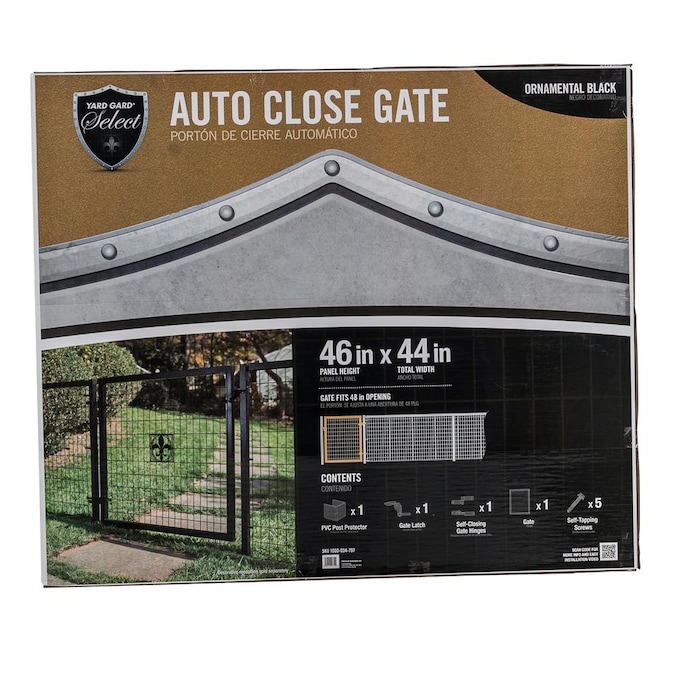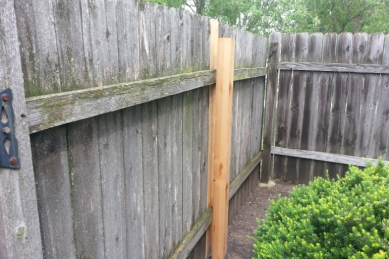
You must ensure that you are using the right type and size of wire when installing a Lowes canine fence. The wire that is of higher quality will last longer. You'll spend more money on repairs and maintenance than if you choose a cheaper wire. You will need to replace the wire sooner than you planned because it is more susceptible to corrosion and breakage.
The type of wire you purchase for your Lowes dog fence will largely depend on its size and how much you're willing to spend. If your dogs are small, you may want to buy 20-gauge wire. Although this wire will break down more quickly than thicker wires, it will last longer. Extreme UV Resistant Fence Wired can be used for larger areas. This wire is made with solid copper and is resistant against extreme temperatures. This type of wire can be more expensive so it will need to to be unrolled by hand.

Extreme Electric Dog Fence Wire, another alternative to a Lowes fence for dogs, is also available. The wire comes on a continuous coil and does not require splicing. The Extreme brand uses a polyethylene coating which is UV-resistant to protect the wire from sun damage. It is compatible with both above-ground and below-ground wired dog fences. While it may be more expensive then standard wire, it will last far longer than stranded pet fences.
Dog fence wire must be thick and durable. Use a wire with a smaller gauge than the one used for electric fencing. The thickness of the wire is also important. You should choose a thicker gauge of wire if you are installing a dog fence in an area that will be used for a long time. The same gauge should be used for the replacement wire. This will ensure that there is a consistent signal across the entire length of the wire.
You must select the right wire when you are choosing a dog fence. You can use wire of a lower or higher gauge. You should choose waterproof wire if you are installing a fence over several acres. A thicker wire will stop your dog chewing the fence. You'll need a wire with a greater gauge if you want to cover larger areas.

High-quality wire has better properties. It's better to invest in high-quality wire than cheap wire which might end up breaking after a few months. It will last a lot longer and will not get twisted. A thicker gauge is better for larger properties. You will get more coverage and better signal range. Your dog will be less likely to jump through the fence if you do this.
FAQ
Are permits required to renovate my home?
Yes, you will need permits before starting any home improvement project. In most cases, you will need a building permit and a plumbing permit. A zoning permit is also required depending on the type and extent of work you are performing.
What time does it take to finish a home remodel?
It depends on the size of the project and the amount of time that you spend each day. The average homeowner works on the project for three to six hour a week.
What room should first be renovated?
The kitchen is the heart of any home. It is where you spend your most time cooking, entertaining, eating, and relaxing. So if you are looking for ways to make your kitchen more functional and attractive, start there!
The bathroom is also an important part of any home. The bathroom provides privacy and comfort while you do everyday chores like brushing your teeth, shaving and bathing. This will make these rooms more functional and beautiful.
Statistics
- Rather, allot 10% to 15% for a contingency fund to pay for unexpected construction issues. (kiplinger.com)
- Design-builders may ask for a down payment of up to 25% or 33% of the job cost, says the NARI. (kiplinger.com)
- A final payment of, say, 5% to 10% will be due when the space is livable and usable (your contract probably will say "substantial completion"). (kiplinger.com)
- On jumbo loans of more than $636,150, you'll be able to borrow up to 80% of the home's completed value. (kiplinger.com)
- They'll usually lend up to 90% of your home's "as-completed" value, but no more than $424,100 in most locales or $636,150 in high-cost areas. (kiplinger.com)
External Links
How To
How do I plan a whole house remodel?
Research and careful planning are essential when planning a house remodel. Before you even start your project there are many important things that you need to take into consideration. The first thing you need to decide is what kind of home improvement you want to make. There are many options available, including kitchen, bathroom and bedroom. Once you know which category you would like to work on, you'll need to figure out how much money you have available to spend on your project. If you do not have any previous experience in working with homes, it is best that you budget at least $5,000 per bedroom. You might be able get away with less if you have previous experience.
Once you know how much money your budget allows you to spend, then you will need to decide how big a job it is you are willing to take on. If you have only enough money to remodel a small kitchen, you may not be able add new flooring, countertops, or paint the walls. You can do almost everything if you have enough cash for a full-scale kitchen renovation.
Next, look for a contractor with experience in the type or project you are looking to tackle. This will ensure you get quality results and save you a lot of hassle later. Once you have hired a contractor, gather materials and other supplies. You might need to make everything from scratch depending upon the size of your project. However, it is possible to find everything you need in a variety of shops that sell premade items.
Once you've gathered the supplies needed, it's now time to start planning. You will first need to sketch out an outline of the areas you plan to place appliances and furniture. Next, plan the layout. Remember to leave enough space for outlets and plumbing. Visitors will be able to easily reach the areas that are most frequently used near the front doors. Final touches to your design include choosing the right colors and finishes. You can save money by using neutral colors and simple designs.
Now it's time to build! Before you start any construction, be sure to check the local codes. While some cities require permits, others allow homeowners to construct without them. To begin construction you will first need to take down all walls and floors. The next step is to lay plywood sheets on your new flooring. Then, you'll nail or screw together pieces of wood to form the frame for your cabinets. The frame will be completed when doors and windows are attached.
There are some final touches that you will need to make after you are done. For example, you'll probably want to cover exposed pipes and wires. For this, you will use plastic sheeting or tape. You will also need to hang photos and mirrors. Be sure to tidy up your work space at all costs.
These steps will help you create a functional, beautiful home that is both functional and attractive. Now that you are familiar with how to plan a whole home remodel project, it is time to get started.